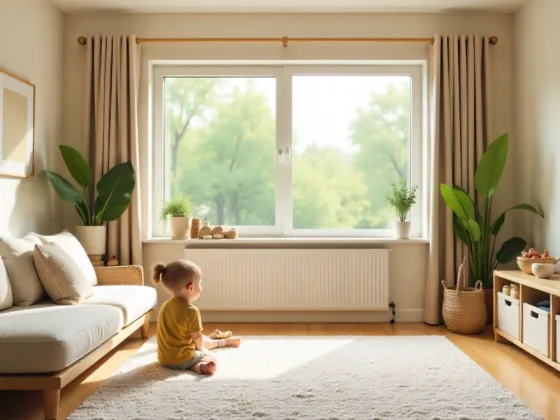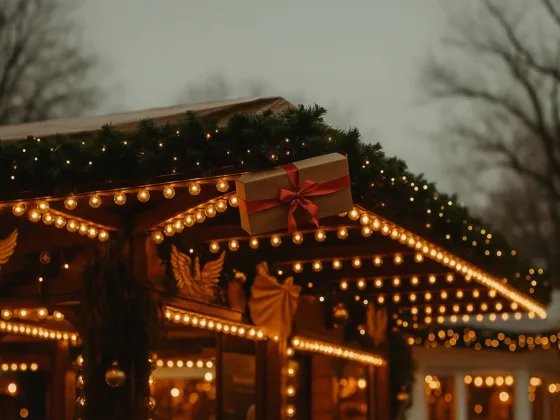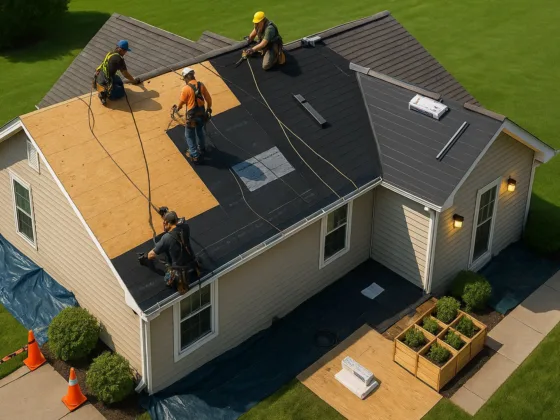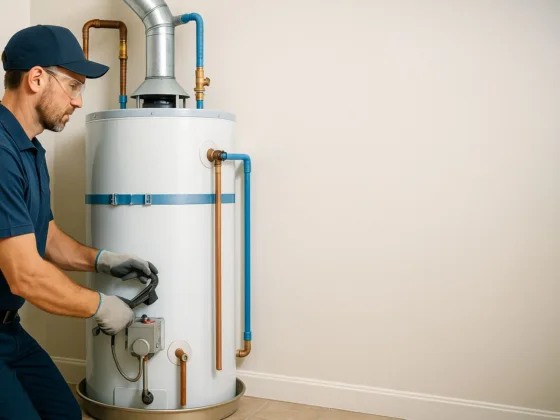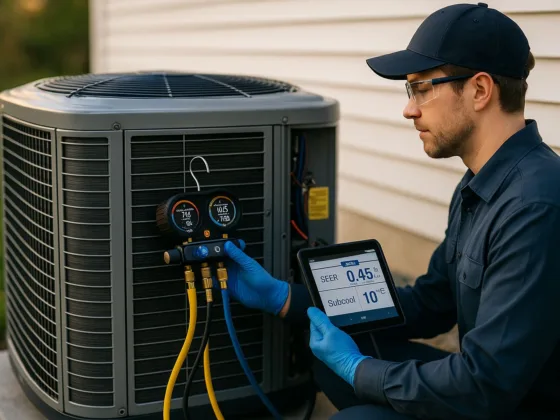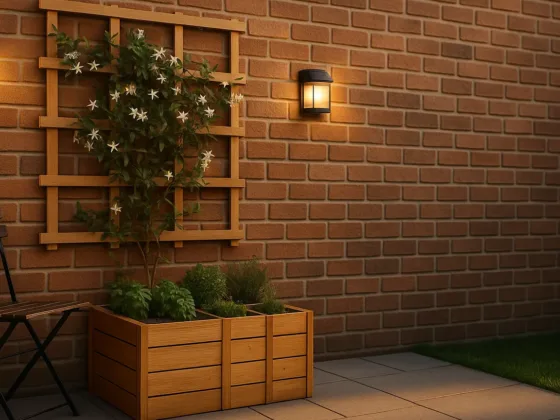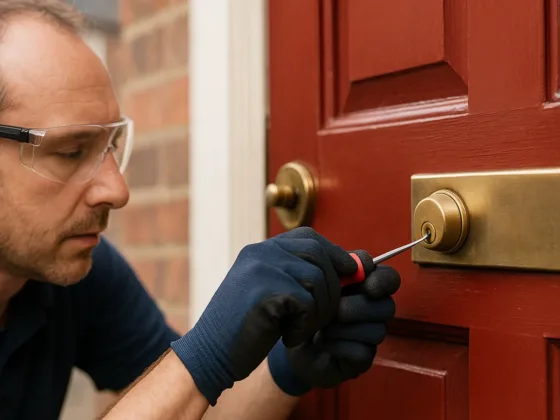Table of Contents Show
Winter in the Twin Cities spends about 5 percent of its hours below –20 °F wind-chill, then swings past 90 °F with July humidity. Those extremes squeeze, swell, and soak your siding—peeling any paint that isn’t up to the task.
The upside of doing it right is huge: a pro-level exterior repaint can return roughly 152 percent of its cost at resale, turning every dollar into about $1.52 when you sell.
This guide delivers climate-smarter color picks, cold-weather products, perfect timing, and easy upkeep tips—so your house looks crisp in January and camera-ready on the Fourth. Ready to choose a finish that’s as gorgeous as it is glacier-proof? Let’s dig in.
How Minneapolis Weather Damages Exterior Paint (And How to Prevent It)
Every winter, the Twin Cities spend about five percent of December–February hours with wind-chill readings below −20 °F (National Weather Service). By July, the metro logs thirteen days above 90 °F, according to the Minnesota Department of Natural Resources. That 110-degree swing squeezes, swells, and soaks every clapboard, brick, and fiber-cement panel on your house.
Here’s what that looks like up close:
- Deep freezes turn bargain paint films brittle.
- Spring thaw forces meltwater into hairline cracks; the next overnight freeze pries those cracks wider.
- Mid-summer UV and humidity bleach pigments and feed mildew.
Add sleet, lake-effect humidity, and daily freeze-thaw cycles that flex a wall’s surface dozens of times in 24 hours, and paint becomes your first, and often only, line of defense. Top-tier acrylics stay elastic and UV-shielded, while budget blends surrender within a season or two.
That’s why every decision you make next, from primer to color palette, must account for climate first. Nail the science now and your exterior will still look fresh after the third polar vortex.
Best Paint Formulas and Finishes for Minneapolis’ Extreme Weather
Before we talk color, we need a coating system that survives a Minnesota year, and that starts with paint chemistry.
A high-grade, one-hundred-percent acrylic exterior formula is the workhorse because acrylic resins flex when clapboards shrink in January and swell in July. Two standouts extend the season even further: Benjamin Moore Element Guard, which resists rain one hour after application and bonds at 35 °F, and Sherwin-Williams Latitude, designed to flow smoothly from 35 °F to 120 °F while shrugging off early-morning dew in 30 minutes. Either coating offers a valuable shoulder-season safety net, but good prep still matters.
Primer is the handshake between siding and paint. On bare wood or masonry, choose an exterior primer that blocks moisture and tannin bleed; skip it, and the first freeze–thaw cycle will expose the weak spot. Follow with a paintable elastomeric caulk such as DAP Dynaflex Ultra, which stays flexible, weatherproof, and is rain-ready in one hour, to seal every seam, nail head, and trim joint.
Sheen matters, too. A satin or low-lustre finish resists dirt and stains better than flat while still disguising minor surface flaws. Reserve semi-gloss for doors and trim that face salty slush and daily fingerprints.
Finally, respect the calendar. Even premium acrylics need a clean, dry surface and mild forecast. Blue Painting, a Minneapolis painting company, calls a dry, semi-cloudy day near 50 °F the “paint-gold” zone, because the film cures slowly and evenly, so aim for a string of 50 °F–80 °F days with low humidity. Start on the east wall at breakfast and wrap up on the west side before dusk to keep surface temperatures steady. With that foundation in place, every color decision that follows becomes armor, not just ornament.
1. Warm Neutral Exterior Paint Colors That Work Year-Round in Minneapolis
After a decade of cool grays, Midwest designers are leaning into hues with a hint of sunshine. Sherwin-Williams even tucked two cozy neutrals, Grounded SW 6089 (an earthy tan) and Sunbleached SW 9585 (a light, airy greige), into its 2025 Color Capsule of the Year, calling them “versatile shades that feel as comforting as a knit throw.”
That warmth shows on Minneapolis streets. Against a February snowbank, an ivory-leaning greige glows instead of disappearing into the whiteout. In July, the same color softens harsh sunlight rather than bouncing glare through your windows. Pair it with crisp white trim for a classic look, or outline new black windows to nudge the palette toward modern farmhouse.
A practical bonus: road-sand dust blends right in, and UV fade runs slower than on deeper colors, so the finish stays fresh between repaint cycles. In short, a warm neutral is the paint equivalent of a friendly smile—always appropriate, always inviting, and never out of season.
2. Best Bold Exterior Colors: Deep Blue and Forest Green for Minnesota Homes
Design pros across the Upper Midwest agree: the safest way to stand out in 2025 is to go deep. A recent regional survey found homeowners from Minneapolis to Kansas City trading mid-tone grays for saturated hues like Sherwin-Williams Naval SW 6244 and Benjamin Moore Black Forest Green HC-187, calling them “grounded yet sophisticated alternatives that read beautifully against snow.”
Picture it: July sunshine makes a navy façade glow like Lake Harriet at noon, while December ice turns it into a midnight backdrop for string lights. A forest-green Craftsman, trimmed in warm cedar, channels North Shore cabins yet still feels urbane enough for Linden Hills.
Dark pigments absorb more heat, and that extra warmth can help ice slide off gutters. Premium formulas now include UV blockers that keep deep blues and greens from chalking the way they did in the 1990s. Just remember, elastic caulk around seams is essential because thermal expansion is greater on darker siding.
Still hesitant? Paint the main body a bold tone and soften the effect with a pale soffit or porch ceiling. Think statement jacket over a classic tee—confident without startling the neighbors, and a perfect match for Minneapolis’ changeable light.
3. Earthy Exterior Paint Colors That Complement Minnesota Landscapes
While the coasts chase pastels, the Upper Midwest favors shades lifted from lake trails and cedar-chip paths. A recent Homes & Gardens roundup predicts earthy terracotta and muted sage will be “one of 2025’s most crowd-pleasing exterior statements, grounding homes in their natural setting.”
Picture a Nokomis bungalow wrapped in PPG Olive Grove, a soft sage that feels fresh under summer leaves yet stays lively when those leaves give way to snow. Or imagine a turn-of-the-century stucco warmed with Behr Kalahari Sunset, a dusty terracotta that looks Mediterranean in July light and glows against January whiteouts.
Practical perks add up: these mid-value hues hide road grime better than pure white, avoid the severe UV fade of charcoal, and pair naturally with wood accents if you mix materials. With creamy trim, an earthy exterior lets a Minneapolis house feel stitched into the landscape, part of the view rather than perched on it, while keeping the finish season-proof.
4. How to Use Two-Tone Color Schemes and Bold Trim for Curb Appeal
If warm neutrals feel like a wool blanket, high-contrast trim is the tailored overcoat that finishes the outfit. Black window frames against a stone-gray façade remain a Minneapolis favorite because fresh snow turns the pairing into instant graphic art. The flip side—soft white siding with espresso trim—delivers the same crisp lines without leaning full farmhouse.
Design pros say accents are only getting bolder. When Behr named “Rumors” (MQ1-15), a deep ruby red, as its 2025 Color of the Year, the company’s survey found that 86 percent of Americans believe a home with a red front door stands out on the block. Translation: your entry can steal the show without repainting the whole house.
If you choose this look, let finish chemistry do the heavy lifting. A semi-gloss enamel such as Sherwin-Williams Emerald Rain Refresh shrugs off slush and fingerprints with a garden-hose rinse while sharing the acrylic base of your satin wall color so both materials flex together during freeze-thaw swings.
The payoff? Every gable, cornice, and doorframe sings, no matter how many inches of snow pile up around it.
5. Top Trend: Combining Painted Siding with Wood Accents in Cold Climates

The headline exterior trend for 2025 is the material mash-up: sleek, painted siding set against raw or lightly stained timber. Design firm Brick & Batten calls mixed textures “the quickest route to instant curb charisma,” reporting a 37 percent jump in client requests for wood-and-paint combos this year.
Why it works in Minneapolis is simple: wood warms up long winters. A charcoal HardiePlank body sets the stage, then cedar porch columns or a ribbon of shake shingles in the gable add cabin-by-the-lake soul without tipping the whole house into rustic.
Protection is critical. Choose a rot-resistant species such as cedar or thermally modified pine, and seal it with a semi-transparent stain rated for minus-20 °F flexibility. Products like Benjamin Moore WoodLux deliver low-VOC durability while letting grain show through. Recoat every two to three years and clear snow from boards so meltwater cannot wick into end grain.
Handled that way, the contrast of satin paint and living wood feels less like a fad and more like a Minneapolis tradition in the making.
Best Time of Year to Paint a House Exterior in Minneapolis
Paint lives or dies by the calendar. Minneapolis averages about sixty-five “prime painting” days each year, most between May 10 and September 10. During that window, daytime highs sit in the ideal 50 °F–80 °F band, humidity stays moderate, and overnight lows remain above the dew point that turns fresh paint gummy.
Think of the season in three acts:
- Late spring (May 10–June 5) – Surfaces warm, pollen stays low, and rain showers are brief.
- High summer (June 10–July 15) – Dry stretches abound, but chase shade so paint does not flash-dry above 90 °F.
- Late-summer sweet spot (August 16–September 10) – Humidity drops while temperatures remain kind. Contractors call this the comeback window because delayed jobs finally get perfect conditions.
After mid-September, every forecast becomes a chess match of dew points, overnight lows, and rain chances. Low-temperature acrylics can cure at 35 °F, yet they still need dry siding and at least eight frost-free hours, so they work best for touch-ups, not full repaints.
Whatever week you choose, follow the sun in real time: start on the east wall at breakfast and finish on the west wall before dusk. That simple dance keeps surface temperatures steady and helps your new finish survive its first winter.
Exterior Paint Maintenance Tips for Minnesota Homes
A flawless paint job is not a time capsule; it is a living shell that flexes with every freeze thaw twitch and summer downpour Minneapolis delivers. Routine check ups, plus a reliable workmanship warranty, can stretch the typical seven to ten years between repaints toward the double digits.
Begin each April with a coffee in hand perimeter walk. If the tour reveals a thumbnail chip or a hairline crack, touch it up that same afternoon; waiting until Labor Day can turn that speck into a dinner plate blister. If that ladder work feels risky or too time consuming, Twin Cities painting firm Blue Painting backs every exterior job with a two year workmanship warranty and will return to mend those early blemishes for you. Keep a squeeze tube of paintable elastomeric caulk and a half pint of your siding color in the garage so fixes never feel like a project.
Dirt is paint’s silent saboteur, trapping moisture and mildew spores. Once a year, mist the house with a garden sprayer filled with one ounce of dish soap per gallon of water, then rinse from bottom up and top down. Skip pressure-washer tips narrower than forty degrees; excessive force etches the coating you paid to protect.
Look up, too. Clogged gutters create dirty waterfalls that carve through latex film and can yank paint off in ice-dam season. Clearing them each fall is the cheapest exterior work you will complete all year.
If you added natural-wood accents, reserve one weekend every other summer to brush on a fresh coat of UV-blocking stain. Tackle it the same day you oil patio furniture, and the reminder will pop up on your calendar without effort.
Conclusion
Follow these small rituals, and your siding should stay showroom-sharp long after the neighbors schedule their next repaint.
We independently recommend all products based on performance in Minneapolis weather. This guide contains no paid placements or sponsored links.
Why Trust This Guide?
- 🎨 Product testing and use cases with top paint brands
- ✅ Based in Minneapolis with cold-climate expertise
- 🛠️ Real-world tips from homeowners and pros
- 🔬 Data-backed by NWS, DNR, and product performance specs
Emma Miller is a Minneapolis-based renovation writer and DIY enthusiast with over a decade of hands-on experience in cold-climate home improvement. As a longtime Twin Cities homeowner, he combines personal trial-and-error with extensive research to deliver realistic, region-specific advice. His guides have helped thousands of Midwestern homeowners choose materials and finishes that can stand up to deep freezes, sweltering summers, and everything in between.
FAQs: Exterior Painting Tips for Minneapolis Weather and Homes
Better to wait. Even low-temperature acrylics still need several frost-free nights to cure. Minneapolis records overnight lows below 32 °F on twenty-eight of thirty-one January days, so moisture crystallizes inside the film and ruins adhesion.
Premium cold-climate options shine. Benjamin Moore Element Guard resists rain one hour after application and bonds at 35 °F, while Sherwin-Williams Latitude stays flexible from 35 °F up to 120 °F, matching the Twin Cities’ freeze-thaw routine and humid summers.
A dark façade can run ten to fifteen degrees hotter than a white one in direct sun, yet proper attic insulation and ventilation erase most of that heat before it reaches interior drywall. Choose the color you love and manage indoor comfort with roof vents and window shades.
Stand across the street and note the dominant temperature of nearby homes—cool, warm, or neutral. Select a hue in the same family but a shade lighter or darker. That subtle shift keeps curb appeal cohesive while giving your house its own voice.
Yes. Bare brick needs a breathable masonry primer so trapped moisture can escape. Wood siding calls for scraping and a stain-blocking primer. Fiber-cement is forgiving—wash, dry, and top-coat with an all-season acrylic. Match prep to material and your finish will last.





